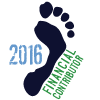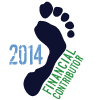I'm doing C25K and I'm on about week 3.
I know that It's perfectly fine to repeat a day/week as needed if I'm not ready to continue or to take an extra day of rest if I feel I need it. However, what if I want to run more?
Once or twice I week I've been doing some short runs on 'rest' days (nothing intense, just relaxed pace, a couple km at most) simply because I just have to get moving, I enjoy running and can' not run :/
Plus, at this point the workouts seems like nothing, I finish them and I feel like I could have gone through like 5 times that and don't quite feel satisfied :/ my muscle are never sore I'm just slightly less tired than before hand. (I've tried sprinting during the running portions helps me for the day of the workout, but by the next day I'm completely fine again and want to run again)
My gut tells me that at the moment I'm fine as nothing hurts, or aches, or feels sore, but I'm wondering if perhaps Im overdoing it?
Everything I find online basically says to not going over what is says in the plan, not even by a single km, but Ive been doing this since I started the progam and feel fine.
If I start to feel like it's too much I'll stop, but at the moment it doesn't even feel like enough.
Basically, am I going to injure myself, or should I be fine as long as I tone it down if things start to get hairy?
I know that It's perfectly fine to repeat a day/week as needed if I'm not ready to continue or to take an extra day of rest if I feel I need it. However, what if I want to run more?
Once or twice I week I've been doing some short runs on 'rest' days (nothing intense, just relaxed pace, a couple km at most) simply because I just have to get moving, I enjoy running and can' not run :/
Plus, at this point the workouts seems like nothing, I finish them and I feel like I could have gone through like 5 times that and don't quite feel satisfied :/ my muscle are never sore I'm just slightly less tired than before hand. (I've tried sprinting during the running portions helps me for the day of the workout, but by the next day I'm completely fine again and want to run again)
My gut tells me that at the moment I'm fine as nothing hurts, or aches, or feels sore, but I'm wondering if perhaps Im overdoing it?
Everything I find online basically says to not going over what is says in the plan, not even by a single km, but Ive been doing this since I started the progam and feel fine.
If I start to feel like it's too much I'll stop, but at the moment it doesn't even feel like enough.
Basically, am I going to injure myself, or should I be fine as long as I tone it down if things start to get hairy?





























